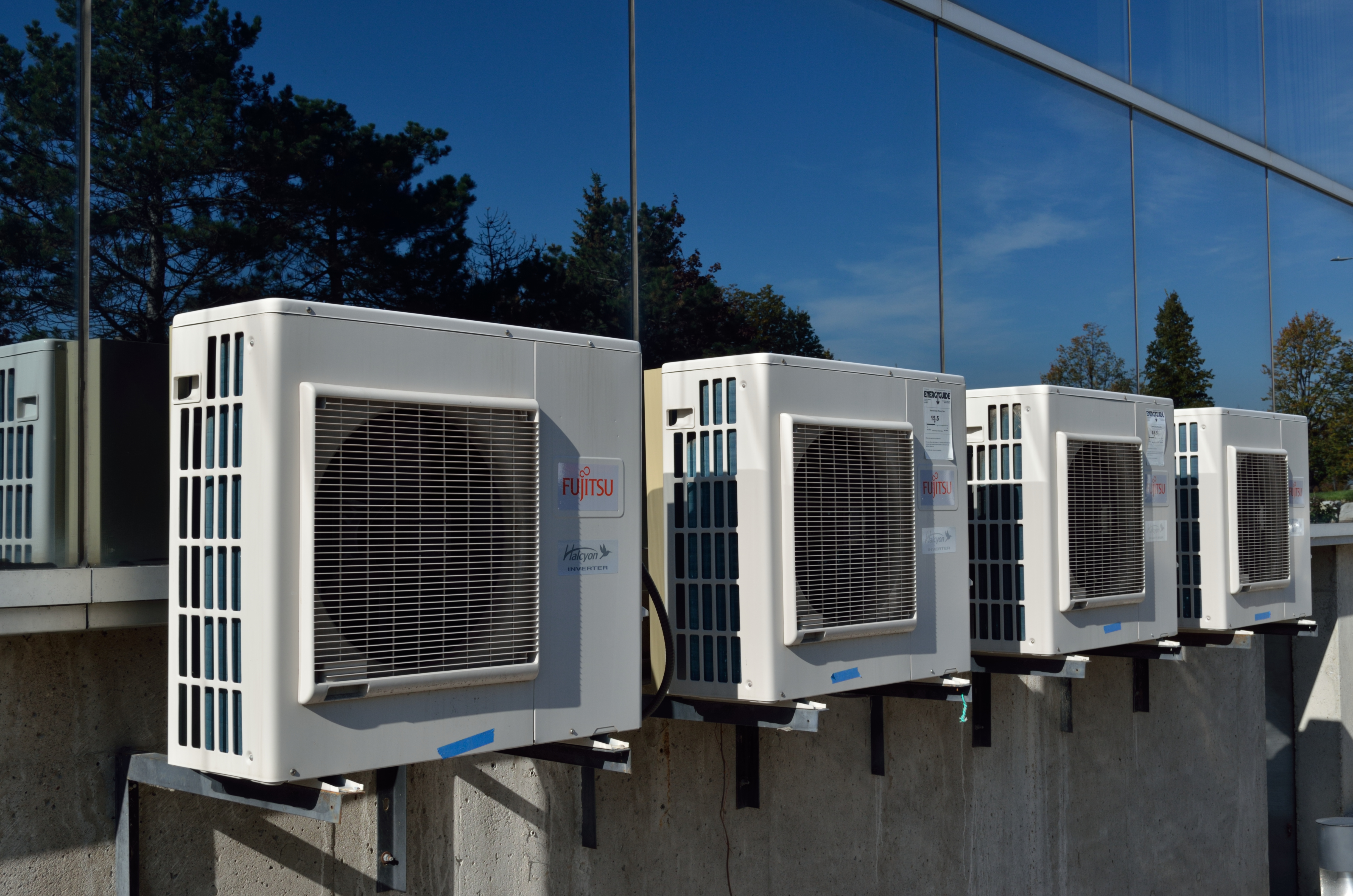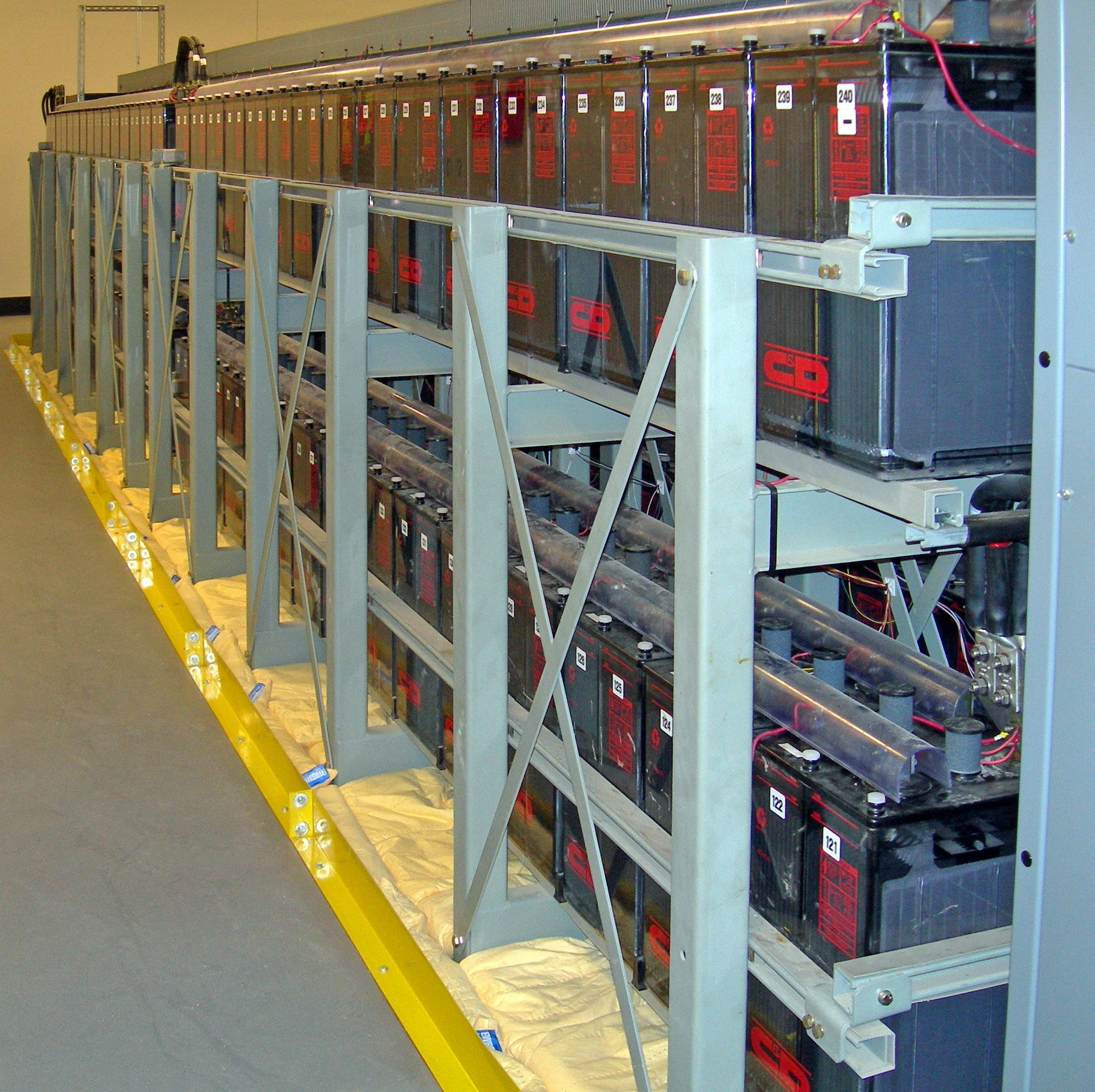|
Spinning Reserve
In electricity networks, the operating reserve is the generating capacity available to the system operator within a short interval of time to meet demand in case a generator goes down or there is another disruption to the supply. Most power systems are designed so that, under normal conditions, the operating reserve is always at least the capacity of the largest supplier plus a fraction of the peak load. Types of operating reserve The operating reserve is made up of the spinning reserve as well as the non-spinning or supplemental reserve: * The spinning reserve is the extra generating capacity that is available by increasing the power output of generators that are already connected to the power system. For most generators, this increase in power output is achieved by increasing the torque applied to the turbine's rotor. [...More Info...] [...Related Items...] OR: [Wikipedia] [Google] [Baidu] |
Curtailment (electricity)
In the electric power industry, curtailment is an involuntary reduction of the electric generator output ("dispatch down") made to maintain the grid stability (for example, for the grid balancing). While curtailment is a standard technique that had been applied throughout the history of electric power production, in the 21st century it became an economic issue for the owners of wind and solar generators. These variable renewable energy plants, due to the absence of an expendable resource (like fuel), have quite low marginal cost of the electricity production, so curtailment affects the economics of the project in a much more significant way than in the case of conventional units. Curtailment is a loss of potentially useful energy, and may impact power purchase agreements. However, using all available energy may require costly methods such as building new power lines or storage, becoming more expensive than letting surplus power go unused. Examples After ERCOT built a new t ... [...More Info...] [...Related Items...] OR: [Wikipedia] [Google] [Baidu] |
California Independent System Operator
The California Independent System Operator (CAISO) is a non-profit Independent System Operator (ISO) serving California. It oversees the operation of California's bulk electric power system, transmission lines, and electricity market generated and transmitted by its member utilities. CAISO is one of the largest ISOs in the world, delivering 300 million megawatt-hours of electricity each year and managing about 80% of California's electric flow. History The California Legislature created CAISO in 1998 as part of the state restructuring of electricity markets. The legislature was responding to Federal Energy Regulatory Commission (FERC) recommendations following the passage of the federal Energy Policy Act of 1992, which removed barriers to competition in the wholesale generation of electricity business. FERC regulates CAISO because interstate transmission lines fall under the jurisdiction of federal commerce laws. Management CAISO's leadership consists of executive managem ... [...More Info...] [...Related Items...] OR: [Wikipedia] [Google] [Baidu] |
Electric Power Transmission
Electric power transmission is the bulk movement of electrical energy from a generating site, such as a power plant, to an electrical substation. The interconnected lines that facilitate this movement form a ''transmission network''. This is distinct from the local wiring between high-voltage substations and customers, which is typically referred to as electric power distribution. The combined transmission and distribution network is part of electricity delivery, known as the electrical grid. Efficient long-distance transmission of electric power requires high voltages. This reduces the losses produced by strong currents. Transmission lines use either alternating current (AC) or direct current (DC). The voltage level is changed with transformers. The voltage is stepped up for transmission, then reduced for local distribution. A wide area synchronous grid, known as an ''interconnection'' in North America, directly connects generators delivering AC power with the same rela ... [...More Info...] [...Related Items...] OR: [Wikipedia] [Google] [Baidu] |
Transformer
In electrical engineering, a transformer is a passive component that transfers electrical energy from one electrical circuit to another circuit, or multiple Electrical network, circuits. A varying current in any coil of the transformer produces a varying magnetic flux in the transformer's core, which induces a varying electromotive force, electromotive force (EMF) across any other coils wound around the same core. Electrical energy can be transferred between separate coils without a metallic (conductive) connection between the two circuits. Faraday's law of induction, discovered in 1831, describes the induced voltage effect in any coil due to a changing magnetic flux encircled by the coil. Transformers are used to change Alternating current, AC voltage levels, such transformers being termed step-up or step-down type to increase or decrease voltage level, respectively. Transformers can also be used to provide galvanic isolation between circuits as well as to couple stages of signa ... [...More Info...] [...Related Items...] OR: [Wikipedia] [Google] [Baidu] |
Load Profile
In electrical engineering, a load profile is a graph of the variation in the electrical load versus time. A load profile will vary according to customer type (typical examples include residential, commercial and industrial), temperature and holiday seasons. Power producers use this information to plan how much electricity they will need to make available at any given time. Teletraffic engineering uses a similar load curve. Power generation In a power system, a load curve or load profile is a chart illustrating the variation in demand/electrical load over a specific time. Generation companies use this information to plan how much power they will need to generate at any given time. A load duration curve is similar to a load curve. The information is the same but is presented in a different form. These curves are useful in the selection of generator units for supplying electricity. Electricity distribution In an electricity distribution grid, the load profile of electrici ... [...More Info...] [...Related Items...] OR: [Wikipedia] [Google] [Baidu] |
Unit Commitment Problem In Electrical Power Production
The unit commitment problem (UC) in electrical power production is a large family of mathematical optimization problems where the production of a set of electrical generators is coordinated in order to achieve some common target, usually either matching the energy demand at minimum cost or maximizing revenue from electricity production. This is necessary because it is difficult to store electrical energy on a scale comparable with normal consumption; hence, each (substantial) variation in the consumption must be matched by a corresponding variation of the production. Coordinating generation units is a difficult task for a number of reasons: * the number of units can be large (hundreds or thousands); * there are several types of units, with significantly different energy production costs and constraints about how power can be produced; * generation is distributed across a vast geographical area (e.g., a country), and therefore the response of the electrical grid, itself a highly c ... [...More Info...] [...Related Items...] OR: [Wikipedia] [Google] [Baidu] |
Energy Conversion And Management
''Energy Conversion and Management'' is a biweekly peer-reviewed scientific journal covering research on energy generation, utilization, conversion, storage, transmission, conservation, management, and sustainability that was established in 1979. It is published by Elsevier and the editor-in-chief is Moh'd Ahmad Al-Nimr ( Jordan University of Science and Technology). Abstracting and indexing The journal is abstracted and indexed in Current Contents/Engineering, Computing & Technology, Science Citation Index Expanded, and Scopus. According to the ''Journal Citation Reports'', the journal has a 2021 impact factor The impact factor (IF) or journal impact factor (JIF) of an academic journal is a type of journal ranking. Journals with higher impact factor values are considered more prestigious or important within their field. The Impact Factor of a journa ... of 11.533. References External links * Elsevier academic journals Academic journals established in 1979 English-langu ... [...More Info...] [...Related Items...] OR: [Wikipedia] [Google] [Baidu] |
Thermostat
A thermostat is a regulating device component which senses the temperature of a physical system and performs actions so that the system's temperature is maintained near a desired setpoint. Thermostats are used in any device or system that heats or cools to a setpoint temperature. Examples include building heating, central heating, air conditioners, HVAC systems, water heaters, as well as kitchen equipment including ovens and refrigerators and medical and scientific incubators. In scientific literature, these devices are often broadly classified as thermostatically controlled loads (TCLs). Thermostatically controlled loads comprise roughly 50% of the overall electricity demand in the United States. A thermostat operates as a "closed loop" control device, as it seeks to reduce the error between the desired and measured temperatures. Sometimes a thermostat combines both the sensing and control action elements of a controlled system, such as in an automotive thermostat ... [...More Info...] [...Related Items...] OR: [Wikipedia] [Google] [Baidu] |
Grid (electricity)
An electrical grid (or electricity network) is an interconnected network for electricity delivery from producers to consumers. Electrical grids consist of power stations, electrical substations to step voltage up or down, electric power transmission to carry power over long distances, and finally electric power distribution to customers. In that last step, voltage is stepped down again to the required service voltage. Power stations are typically built close to energy sources and far from densely populated areas. Electrical grids vary in size and can cover whole countries or continents. From small to large there are microgrids, wide area synchronous grids, and super grids. The combined transmission and distribution network is part of electricity delivery, known as the ''power grid''. Grids are nearly always synchronous, meaning all distribution areas operate with three phase alternating current (AC) frequencies synchronized (so that voltage swings occur at almost the same ... [...More Info...] [...Related Items...] OR: [Wikipedia] [Google] [Baidu] |
Air Conditioning
Air conditioning, often abbreviated as A/C (US) or air con (UK), is the process of removing heat from an enclosed space to achieve a more comfortable interior temperature, and in some cases, also controlling the humidity of internal air. Air conditioning can be achieved using a mechanical 'air conditioner' or through other methods, such as passive cooling and ventilative cooling. Air conditioning is a member of a family of systems and techniques that provide Heating, ventilation, and air conditioning, heating, ventilation, and air conditioning (HVAC). Heat pumps are similar in many ways to air conditioners but use a reversing valve, allowing them to both heat and cool an enclosed space. Air conditioners, which typically use vapor-compression refrigeration, range in size from small units used in vehicles or single rooms to massive units that can cool large buildings. Air source heat pumps, which can be used for heating as well as cooling, are becoming increasingly common in cool ... [...More Info...] [...Related Items...] OR: [Wikipedia] [Google] [Baidu] |
Battery Energy Storage System
A battery energy storage system (BESS), battery storage power station, battery energy grid storage (BEGS) or battery grid storage is a type of energy storage technology that uses a group of batteries in the grid to store electrical energy Electrical energy is the energy transferred as electric charges move between points with different electric potential, that is, as they move across a voltage, potential difference. As electric potential is lost or gained, work is done changing the .... Battery storage is the fastest responding dispatchable source of power on electric grids, and it is used to stabilise those grids, as battery storage can transition from standby to full power in under a second to deal with Contingency (electrical grid), grid contingencies. Battery energy storage systems are generally designed to deliver their full rated power for durations ranging from 1 to 4 hours, with emerging technologies extending this to longer durations to meet evolving grid demands. Bat ... [...More Info...] [...Related Items...] OR: [Wikipedia] [Google] [Baidu] |






